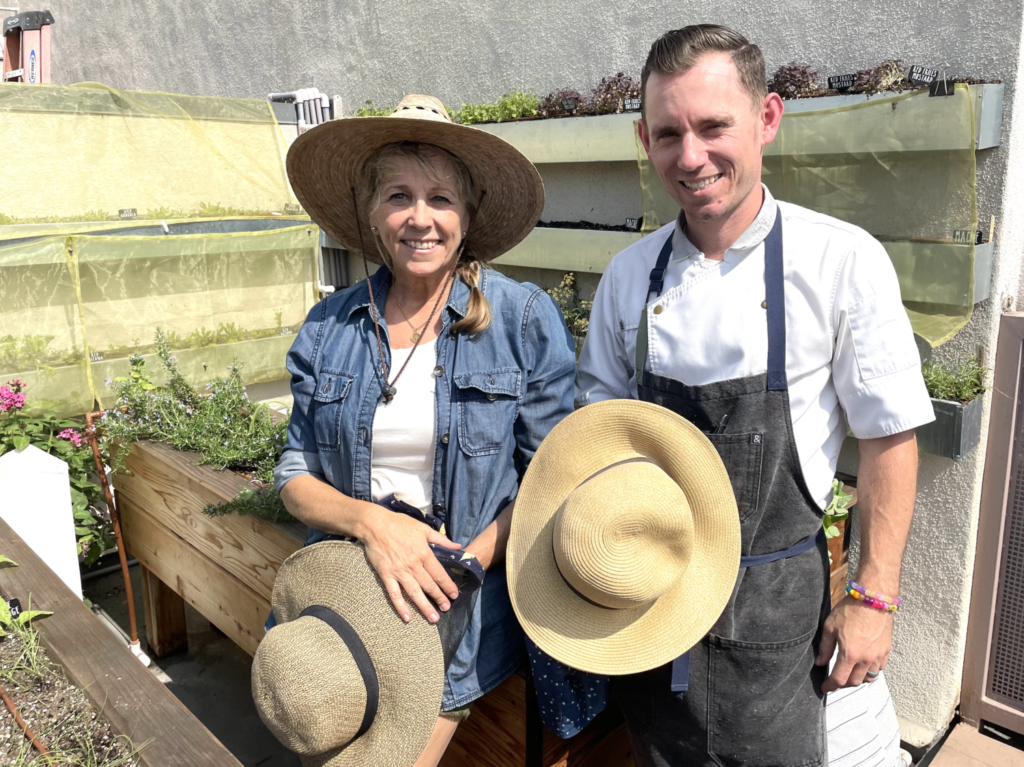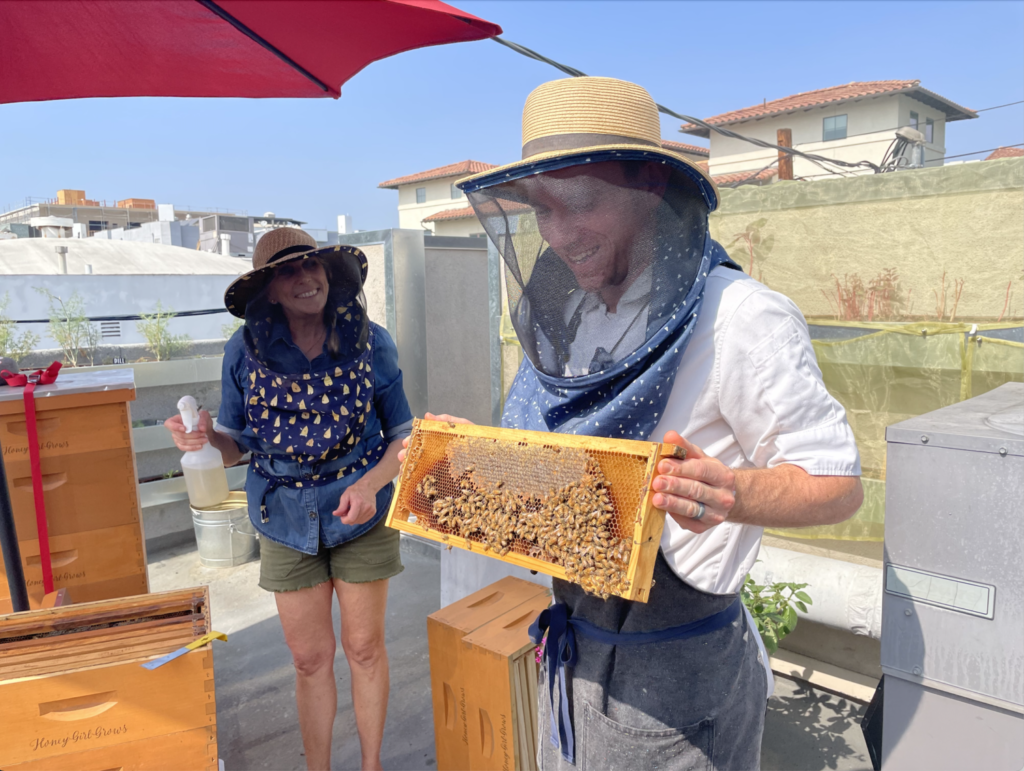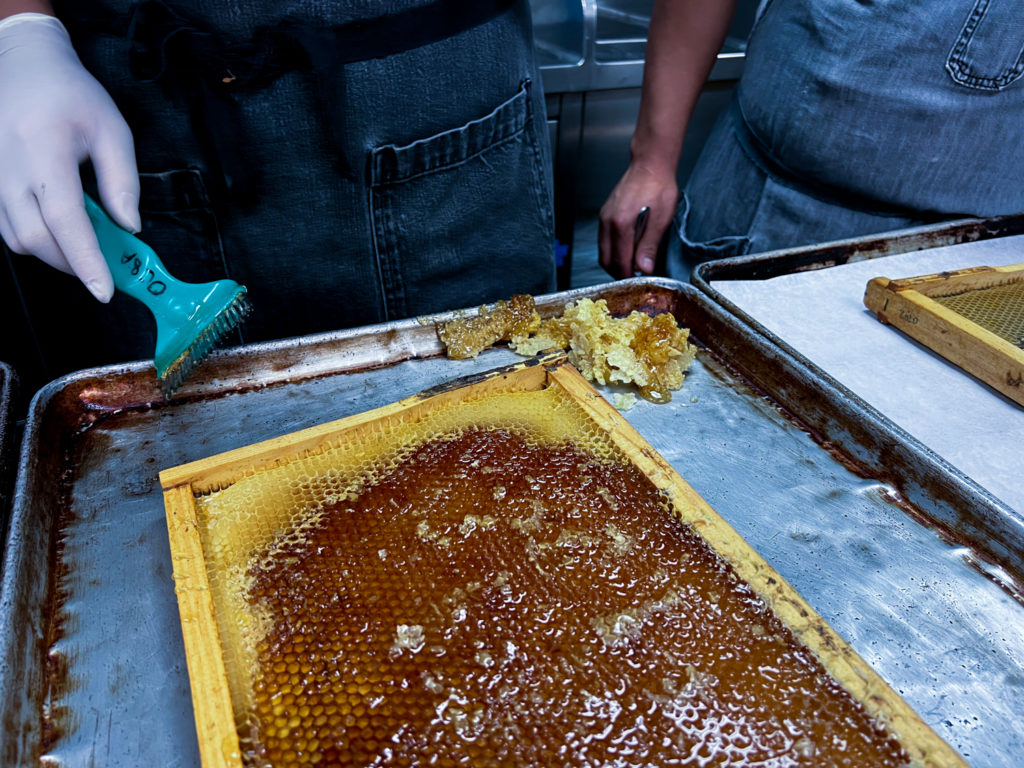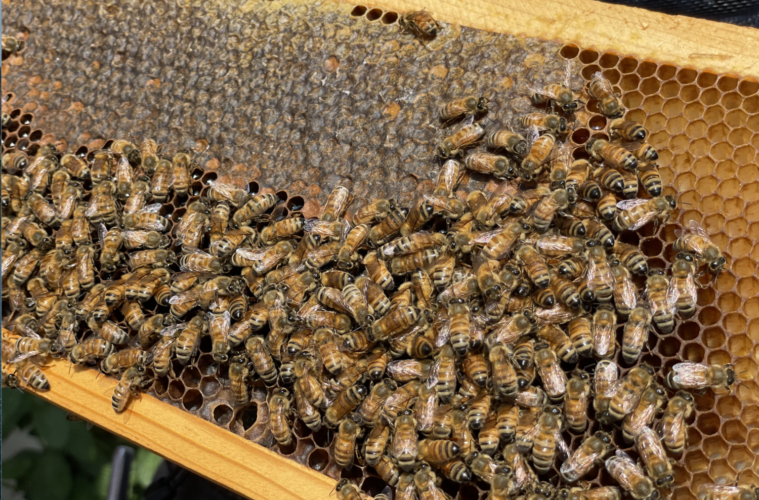Michael Cimarusti’s Michelin-starred Providence, on a busy street in the heart of Hollywood, has always been the subject of praise and sustainability in culinary and environmental circles. But the latest buzz around the elegant seafood restaurant is the approximately 100,000 gentle honeybees that call the restaurant’s urban rooftop garden home.
With the help of Robin Jones, garden designer and curator of Honey Girl Grows, Providence installed two Italian honeybee hives with re-hived locally removed colonies, in April of this year. Unlike raising new populations, re-hiving an already existing honeybee colony that you might find in your loft, attic, garage or underground DWP meters doesn’t pose any threat to available food for other pollinators. After re-hiving, Providence’s colonies were requeened with docile Italian DNA from a queen bee breeder, to assure the genetics were less defensive.
“We pick specific breeds of queens that will lay eggs of bees that are docile with a less defensive DNA, so we’ve added friendly bees into the neighborhood,” Jones tells L.A. Weekly, as she and Chef de Cuisine Tristan Aitchison inspect the stacked boxes of bees.

Robin Jones left, and Tristan Aitchison (Michele Stueven)
“We take hives that have been rescued locally and bring them up here with other native species so that there’s food for everybody, supporting the whole ecosystem,” she says. It’s all organic, the nectar is the carbohydrate that becomes honey and the pollen is the protein of the hive. The Providence honey is from the local neighborhood, and made from the plants and trees that grow near here.”
The bees, which have a five-week life span, pollinate and collect nectar within a 4-mile urban area that includes the fruit and flower-filled neighborhood of Hancock Park, with about 10 million surrounding flowers, shrubs and trees in their ecosystem. In fact, they don’t even venture as far as the Hollywood Hills to the east.
“When you see a cluster of bees without a hive, it is in a heart-shaped form, which they recreate in these boxes as well,” Jones explains. “They build from the bottom to the top, and as they fill the boxes, we divide the boxes by frames to make it easier for the beekeeper to check on their health and wellness, and see what they’re bringing in and their nutrition and growth. The older bees are on the bottom because that’s where the babies are. That’s where the forager bees that you see in your garden come in carrying their nectar and bring it to the young blind bees, and they transfer it in a very tonguey process that looks like a French kiss.”

Up on the roof with Providence bees (Michele Stueven)
The nectar gets transferred into the wax cell that is the honeycomb.
“Providence’s rooftop-sourced honey has a floral flavor profile that is slightly less sweet than most,” says Aitchison, who spearheaded the rooftop ecosystem. “We harvested 5 gallons in August and have used it in the reserve Tableside Japanese Penicillin cocktail and in its purest form as an accompaniment to post-dinner tea service.”
Video by Erik Glode Productions

The harvest (Courtesy Providence)

Providence honey (Michele Stueven)
Advertising disclosure: We may receive compensation for some of the links in our stories. Thank you for supporting LA Weekly and our advertisers.

